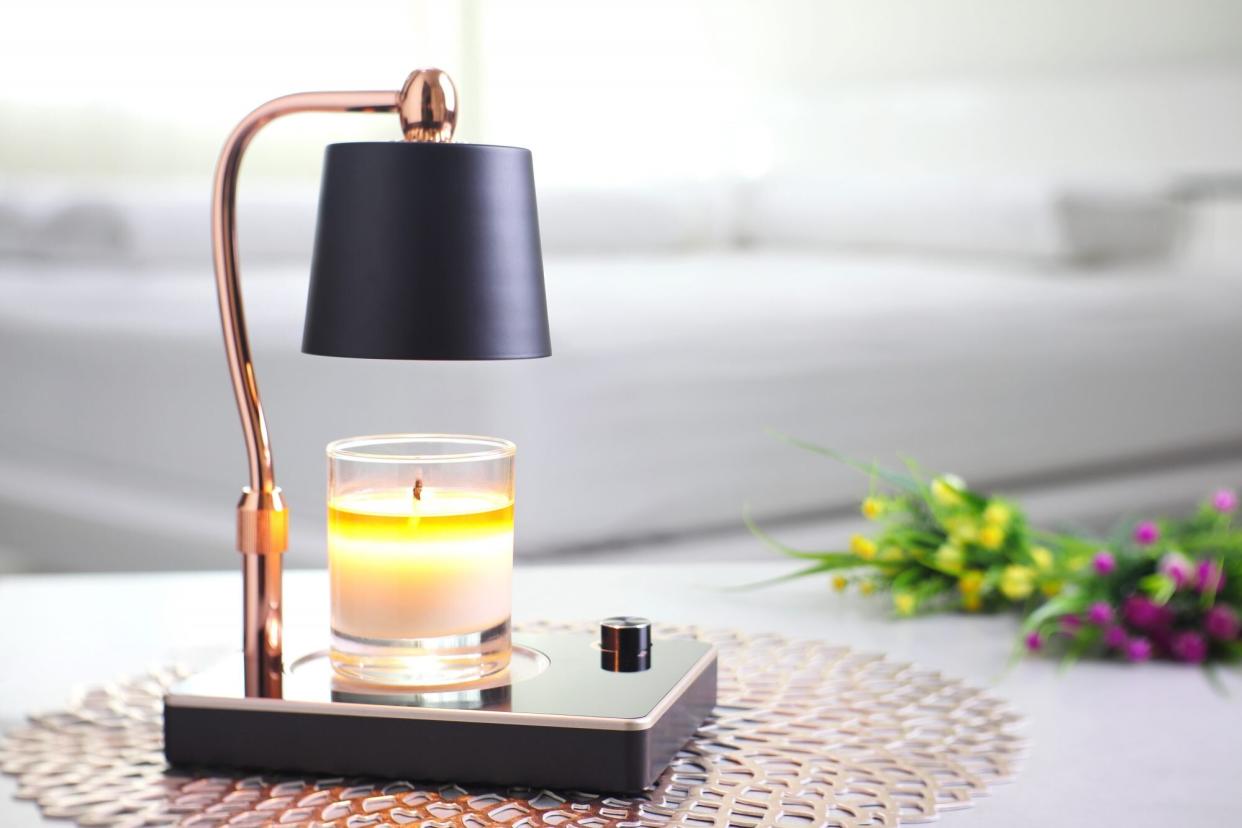The Pros and Cons of Adding a Candle Warmer to Your Home

Enjoy The Life / Shutterstock
Candles can turn a room from cold to cozy and warm with just one flick of a lighter or strike of a match. While you may already have a stash of candles you love, you might not realize that there are accessories that will make your favorite scented accents last longer. One such example? A candle warmer. If you don't already have one, it's time to get acquainted with these devices, as a candle warmer could be a better, more cost-effective option.
Related: 28 Fall Scented Candles That Will Make Your Home Smell Amazing
What Is a Candle Warmer?
A candle warmer is a device that allows for scent distribution throughout a space without the use of an open flame. There is generally a light and/or heat source of some kind within the device, a plug to go in an outlet or a switch to power on a battery, and an area at the top to hold wax melts. The wax melts are small quantities of pre-portioned scented wax with a low boiling temperature.
How Is a Candle Warmer Different Than a Traditional Candle?
Using traditional candles to scent your home can become expensive because they just don't last as long as wax melts within a candle warmer. You're ultimately buying a whole new item each time the wick burns out. With a candle warmer, you're electronically warming and melting candle wax—that means there are no open flames. If you're an avid candle burner, then chances are you've found soot or residue from a burning wick on your walls. This can actually damage or even yellow your walls and wallpaper over time, lowering the value of your home or result in a lost security deposit in a rental. This makes candle warmers a great option for those wanting to forego an open flame.
The Pros of Candle Warmers
A positive of using a candle warmer is versatility and the option to adjust the throw. A throw is essentially the strength of the scent from the candle, and how far the scent "throws" itself throughout the room. A common way to test out your candle's scent is to smell it in the store prior to purchase. This is known as the "cold throw." With a traditional candle, the strength of the cold throw is indicative of the strength of the "hot throw," or the scent once the candle is lit, but it is not always what you would expect. Candlemaker Ki'ara Montgomery of Mind and Vibe Co. says, "The main reason most people typically opt for wax melts over traditional candles is that they don't require an open flame. But wax melts also tend to have a stronger scent throw than traditional candles," she explains. "When wax melts burn, the temperature isn't as high as that of a candle with an open flame and they absorb heat at a slower rate. Because of that, the fragrance oil evaporates slower, giving you a stronger and longer-lasting scent." Though there's the upfront cost of buying a wax warmer, in the long run, wax melts are usually more cost-effective for both consumers and those manufacturing them, Montgomery explains.
Another idea in favor of the candle warmer versus the traditional candle is the increased safety. Open flames can be very dangerous if unattended, especially around pets or children. Candle warmers are very safe, with the primary threat being ruined carpet from melted wax.
The Cons of Candle Warmers
The downside of a candle warmer is that they do not use an open flame. Part of the appeal of a candle is the warmth and cozy feeling the flickering fire provides, and it's likely that you won't get this exact feeling from a candle warmer. Still, there are many candle warmers on the market that light up ($15, target.com) and give a similar feel to that of a lit candle.
Candle warmers also tend to lose their scent a little quicker than a traditional candle, but this can be avoided by adding more wax melts to the device.

